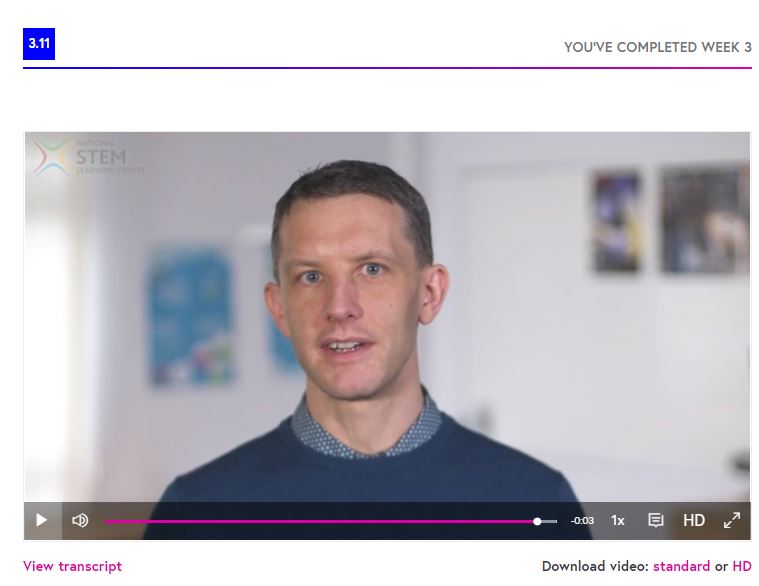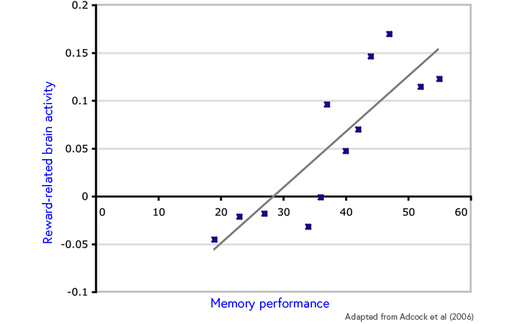I am trying very hard to keep pace. I am not sure 9pm is the best time to start studying?
Week 3 is all about building of knowledge and understanding.
We know that anxiety prevents our frontal cortex from being able to fully respond to a classroom learning opportunity. While on the other hand, anticipation of achievement, praise, or the discovery of something, causes our reward system to activate in a way, that directs our attention and focus on the learning. This readiness to learn is important.
That first representation of a new thought or understanding in our brain, the building of knowledge, usually requires effort, attention and a conscious processing of information. That effort involves activating the so called working memory network, that includes frontal regions of the brain.
As you grasp or manipulate the incoming information, as you’re building new knowledge, your working memory network those regions in the frontal lobes, will be increasing their activation. This grasp of new understanding, benefits from clear concise communication from the teacher and the absence of anything that disrupts that communication. But it also benefits from the student communicating as well, teaching is a two way interaction, that requires the student to frequently communicate their understanding of the world.
So we have Sweller and we have oracy.
Partly, that’s because a teacher needs to know what the student knows, in order to picture their learning at the right level. Teachers need to feel confident that the student has the prior knowledge they should be connecting the new knowledge to. But it’s also because, those frontal regions of the brain, for making the connections are still developing in children.
[h5p id=”3″]
This connects with an IMPACT article from Christopher Tay – A Good Start: The Pedagogical challenge of engaging prior knowledge for all pupils which incidentally references Howard-Jones at the end of the first paragraph.
And a little bit of Bjork and Bjork.
So, some children will require more support making those connections, and others will need less.
Teachers talked about different and deliberate approached to making links eg PEEL; cross-curricular learning getting a good deal of support.
Awareness of working memory limits
(I sense Cognitive Load Theory just around the corner…)
The summary is simple and clear.
Practice helps consolidate freshly-learnt mental processes until we can do them almost without thinking, so reducing the burden on working memory. This is important because, when our limited working memory is liberated, it is ready to be occupied by new information and we are ready to move on and learn more.
So what?
Communicate clearly and concisely, with little unnecessary information.
Distracting or irrelevant information can disrupt our efforts to process learning content.
Presenting verbal explanations at the same time as presenting a lot of text employs much of the same circuitry we use for understanding speech
A common core set of brain regions are activated whether people comprehend written or spoken sentences (Buchweitz et al., 2009). This helps explain why we find it difficult to read text and listen to speech at the same time.
Using different senses
When we become physically active in our learning it involves additional brain activity (linking actions to the concepts) and this makes it easier to remember what we have learnt.
I thinking Kung-fu punctuation? The research programme leads are think manipulatives, a physical experience of working with objects. Eg students modeling with themselves, showcasing the differences in three states of matter. Modelling different molecules, or how they’re packed, how they move.
“increasing the depths of connection that students have with different representations. So some of those kinds of things that you talk about, the structure and movement of molecules, isn’t something we can actually see very easily. So modeling that physically gives children just another way of understanding what they’re going to be talking about and how they’re thinking about different phases of matter.”
It seems reasonable, it is just one possible explanation as could be, it is novel approach, a break from the using teacher-led student-do approach. What of VR?
Apologies, Im an imposter, not a Science teacher. In PE, being active is the most common learning mode. Understand movement in GCSE PE – is most commonly learnt though actively exploring the different movement planes.
The example I provided was from an IT lesson, in which I used the playground to represent a network, running bean bags across it as packets of data.
https://blogs.cisco.com/security/pitching-packets-game-teaches-cyber-security-with-beanbags
Did it improve knowledge retention, maybe.
Did it improve understanding, maybe a little more so.
Was it a) as controlled and b) efficient as a diagram explanation – no and no.
Did the students enjoy IT that day – some more than others, most – more than usual.
Just in case you were not sure – Tim Jay categorically rejects matching teaching style to preferred learning style.
That is not to say the researchers discount the potential benefits of learning being multi-sensory,
…we need to be aware that there are different representations of acceleration, for example. As a formula, as a graph of speed and time, and as a feeling of getting faster. Children are supported to make connections between these kinds of different representations of phenomena and concepts, are going to construct a more flexible foundation of understanding on which to build. – Tim Jay


